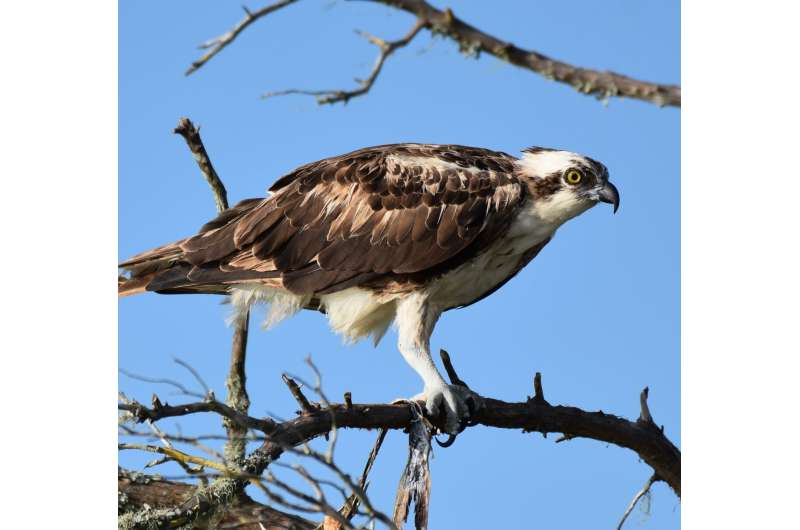Study finds microplastics in Florida's birds of prey for first time

A new study from the University of Central Florida has confirmed and quantified, for the first time, the presence of microplastics in terrestrial and aquatic birds of prey in Florida, including hawks, ospreys and owls.
Microplastics are small plastic pieces—less than the size of a pencil tip—that come from larger pieces of plastic, such as synthetic clothes, or that are made small for use in health and beauty products or industrial purposes.
The research, which was published online recently in the journal Environmental Pollution, is important because birds of prey are critical to a functioning ecosystem. The accumulation of microplastics in their digestive systems could lead to poisoning, starvation and death.
"Birds of prey are top predators in the ecosystem and by changing the population or health status of the top predator, it completely alters all of the animals, organisms and habitats below them on the food web," says Julia Carlin, the study's lead author and a graduate of UCF's Department of Biology.
Microplastic contamination of the environment likely began not long after the first piece of plastic was discarded, says Linda Walters, a Pegasus Professor in UCF's Department of Biology and study co-author.
Ingestion of large pieces of plastic by animals was first noted in the 1960s, and an increased focus on microplastic ingestion started around 2010, she says.
Past studies have documented increasing amounts of microplastics in the guts of fish, marine birds, and filter-feeding invertebrates, such as oysters. There have also been recent reports of whales dying from eating dozens of pounds of plastic, including plastic bags. However, birds of prey have not been thoroughly examined before, partly due to their protected status.
Carlin and Walters were able to overcome this by working with the Audubon Center for Birds of Prey in Maitland, Florida, a rehabilitation center that helps injured raptors.
With the center's permits, UCF researchers were able to examine the stomach contents of 63 birds that were dead when they arrived at the center or died 24 hours after they arrived. The birds were collected from throughout Central Florida.
Using dissecting microscopes and spectroscopy, the researchers found microplastics in the digestive systems of all birds examined, with nearly 1,200 pieces of plastic pulled from the 63 birds.
The most common types of microplastic in the birds were microfibers, which accounted for 86 percent of the plastics found. Microfibers can come from synthetic ropes or clothing and may end up in ecosystems through wastewater from clothes-washing machines.
Blue and clear microplastics were the most common colors identified, but the reasons for this could range from these being the dominant colors of the plastics in the landscape to birds confusing these colors with appropriate prey or nesting materials, according to the study.
Walters says some solutions to the problem could be removing plastic from open landfills, carefully discarding plastic trash, buying natural fabrics instead of plastic-based ones, and retrofitting water treatment plants and stormwater drains to capture microplastics.
"We have all benefitted from the convenience of plastics, but plastics do not go away once produced," Walters says.
More information: Julia Carlin et al, Microplastic accumulation in the gastrointestinal tracts in birds of prey in central Florida, USA, Environmental Pollution (2020). DOI: 10.1016/j.envpol.2020.114633
Journal information: Environmental Pollution
Provided by University of Central Florida




















